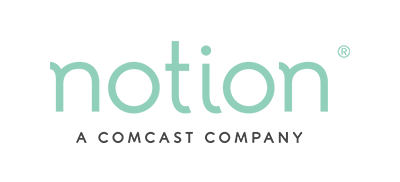Insurance companies long for a way to attract and interact with customers, rather than just hitting customers’ bank accounts every quarter for a premium payment or re-upping a contract at the end of the year. What if I told you that insurers could attract customers with smart home devices that generate interaction seven to 10 times A DAY -- and that customers would initiate those interactions? What if that level of involvement in customers’ lives led to a Net Promoter Score (NPS) above 50 for the insurers?
Those numbers are in fact possible, both with homeowners and with small businesses, through an approach that incorporates IoT to help people avoid P&C risks while fitting easily into their home and work lives.
We know because we’ve seen these sorts of numbers at Notion, which we began with a Kickstarter campaign and grew through insurance partnerships with Hippo, Nationwide and others before being acquired by Comcast this year.
While Notion partners with insurers to provide homeowners and owners of small businesses technology to monitor for water leaks, fire, theft and more, there are a variety of ways to win with smart IoT in the property/casualty world.
In our experience, there are two keys to winning strategies: customer-centric technology and a comprehensive economic case for investment.
First, the technology should deliver benefits, such as “peace of mind,” that customers value highly even though the benefits would be hard to quantify. In our case, customers interact so frequently with the Notion app because they’re checking their system to see if the front door opened around the time their child was supposed to be getting back from school, that it is a comfortable temperature across their home, etc. Those benefits don’t show up in losses averted or claims reduced but can do an awful lot to increase installation rates, to bolster loyalty toward an insurer, to boost NPS and to create opportunities for cross-selling other services.
Every company that has led with a “prevent water damage” message has seen very little interest among consumers. Even if insurers provide water sensors for free, the installation rate can be low if that is the only use case. But technology and messages related to broader home coverage and security resonate with consumers.
Let’s walk through Notion as an example of the trajectory that the “smart home” (and “smart” small business) can take. Auto telematics long required a device to be professionally installed and focused just on discounted premiums for good drivers, and had a slow uptake, so we took a different approach: We’ve focused on a do-it-yourself (DIY) approach and on making that more-than-economic argument for insurers.
We built an affordable system where consumers can monitor their home or small business from anywhere and easily grow to fit their needs. The Notion sensors monitor for water leaks, temperature changes, opening doors and windows, and sounding smoke and carbon monoxide monitors. All the information is collected wirelessly and is made available to the user through an app on their smartphone.
Most homes and small businesses can have key areas covered with just five sensors -- total price for a five-sensor Notion Starter Kit is $199.
Which leads us to the second key to winning strategies: a reasonable economic case for the IoT investment. Many technologies and programs aren’t there yet. For instance, a water shutoff valve that requires a professional installation may not pay for itself for 10 years -- the initial cost is a high barrier.
So, we started from scratch and came up with a program design that produces full ROI in just under two years -- the kind of ROI that any business can appreciate. Just looking at water damage, there are about $10 million in claims each year per 50,000 homeowners policies. By investing in an $85 smart monitoring kit and program for customers, insurers can practically cut their water claims in half.
The ROI looks even better when you consider the other benefits to insurers outside water claim reduction: customer acquisition, customer loyalty, data insights and the potential for selling other services.
The large returns our insurer partners generate by preventing claims allows them to offer a kit at a discount plus offer discounts of roughly 3% to 15% on premiums to help drive adoption. Our partners say discounts could grow substantially as they gather data on losses prevented. (The high end of the discounts goes to those who fully outfit a house or small business, who have professional monitoring and whose setups can be verified by the insurer to make sure they’re actually being used.)
While the discounts alone aren’t enough to generate full adoption even of free sensors, a curated flow of customer communication with a “what’s in it for me” message drives installation way up. (The same was true in telematics: Once messaging switched from discounts to security issues such as driving behavior, adoption finally picked up.)
While regulators were initially careful about what could be given away and what bundles should be allowed, they have become more comfortable with the IoT and understand that we’re all working together to benefit consumers.
They have thus cleared a path for far greater adoption of the IoT, at a time when all trends were already pointing in that direction. According to Statista, the number of homes in the U.S. using smart security systems will nearly triple from 12.8 million in 2017 to 36.7 million by 2023 -- meaning that more than a quarter of U.S. homes will have them. Revenue from smart home devices is expected to grow 17% annually for the foreseeable future.
The trend is very much toward DIY: 47% of security system owners report self-installing their system in 2019, an increase from 27% in 2014, according to Park Associates.
The pandemic seems to even be accelerating the trends, both toward the use of IoT (because people are spending more time in their homes) and toward DIY (because people have more time, without their daily commutes, because people want to keep strangers’ potential infections out of their homes and because videos and chat capabilities on smartphones make “telemaintenance” easier).
A platform like Notion can become the hub for all kinds of services that can be bundled with hardware or sold separately to make the lives of homeowners easier -- for example, connecting a homeowner with a plumber when they have a water leak. With Notion, we have taken this one step further and created a direct integration in our app with HomeAdvisor. Once a leak has been detected, the homeowner can connect to HomeAdvisor’s network of certified professionals with one click.
But that kind of service is just the beginning. In the same way that Tesla bundles insurance with its cars, I can imagine lots of maintenance-related services that could fit nicely into an IoT-based “protect my property” platform. When I say good night to my Google Home, it may remind me to do certain things around the house; why couldn’t insurers help inform homeowners and small business owners?
Now there are winning structures for insurers to leverage IoT smart devices to connect and provide value to their customers -- a win for customers and for P&C insurers.
Sponsored by





